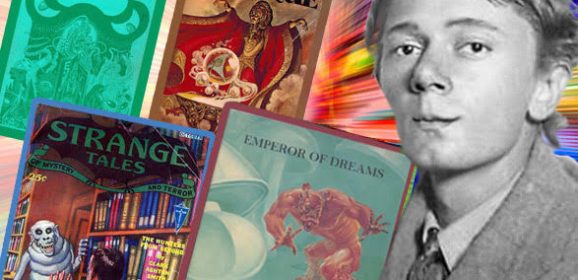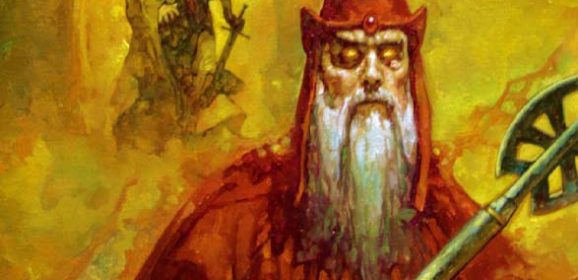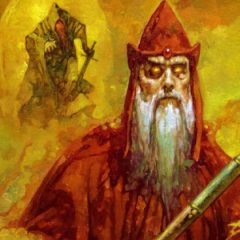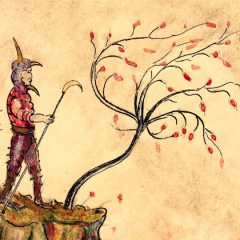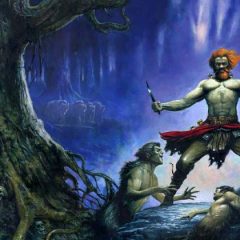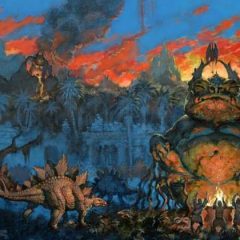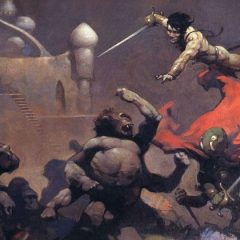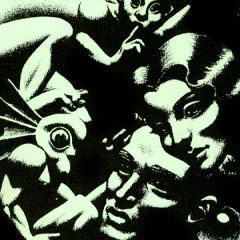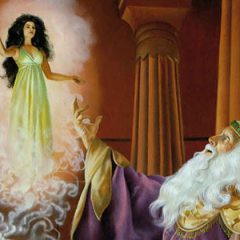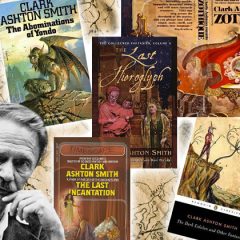Appendix N Archaeology: Clark Ashton Smith
Our Appendix N Archeology and Adventures in Fiction series are meant to take a look at the writers and creators behind the genre(s) that helped to forge not only our favorite hobby but our lives. We invite you to explore the entirety of the series on our Adventures In Fiction home page. Appendix N Archaeology: Clark Ashton Smith by Michael Curtis Gamers often point to Appendix N and decry the absence of a...
What is the Dying Earth?
What is the Dying Earth? by Bill Ward “A dim place, ancient beyond knowledge. Once it was a tall world of cloudy mountains and bright rivers, and the sun was a blazing white ball. Ages of rain and wind have beaten and rounded the granite, and the sun is feeble and red. The continents have sunk and risen. A million cities have lifted towers, have fallen to dust. In place of the old peoples a few thousand strange souls live. There is...
The Self-Made Mind: The Art of Clark Ashton Smith
Clark Ashton Smith, an untutored genius self-educated in both poetry and pulp, also turned his restless mind to art. In everything from his simple line sketches and watercolor landscapes, to his carving and sculpture, Smith demonstrates the same characteristics of baroque intricacy, imaginative grotesquery, and dark humor that are a hallmark of his writing. With names like “Venusian Swamp-Man,” “The King of...
Ten Sword-and-Sorcery Tales For the Haunting Season
Ten Sword-and-Sorcery Tales For the Haunting Season by Brian Murphy On a blog such as this, I doubt I’m alone in my irrational love of Halloween, a holiday for me that, more than Thanksgiving or Christmas, evokes a Ray Bradbury-like level of nostalgia and anticipation. Here in New England, I find that as the leaves begin to turn and October shadows lengthen, so too do my thoughts drift from my natural sword-and-sorcery bent toward the...
Short Sorcery: Clark Ashton Smith’s “The Seven Geases”
Short Sorcery: Clark Ashton Smith’s “The Seven Geases” by Bill Ward Hearken back to one fine day in prehistoric Hyperborea as the proud hunting party of Lord Ralibar Vooz, “high magistrate of Commoriom and third cousin to King Homquat,” scours the flanks of Mount Voormithadreth in the Eiglophian Range for rare quarry. Lesser sportsman might content themselves with the sabertooth cats that stalk the jungle girding the great...
Clark Ashton Smith’s Hyperborea
Clark Ashton Smith’s Hyperborea by Bill Ward “[I]n the harbour there towered an iceberg such as no vessel had yet sighted in all its sea-faring to the north, and no legend had told of among the dim Hyperborean isles. It filled the broad haven from shore to shore, and sheered up to a height immeasurable with piled escarpments and tiered precipices; and its pinnacles hung like towers in the zenith above the house of Evagh. It was...
Where to Start With American Fantasy Series
Where to Start With American Fantasy Series by Bill Ward While J.R.R. Tolkien may be the most famous and ubiquitous of fantasy writers, introducing generations of readers the world over to fantasy fiction through The Hobbit and influencing the way such stories are forever told with his masterwork, The Lord of the Rings, American letters has perhaps contributed more profoundly to the development of the modern secondary world fantasy...
Clark Ashton Smith: The Necromantic Poet of Weird Tales
Clark Ashton Smith: The Necromantic Poet of Weird Tales by Ryan Harvey During the halcyon days of Weird Tales in the 1920s and ‘30s, three writers became so closely linked with the magazine, and so closely linked to each other through their exchange of letters and ideas, that they’re known today as the “Weird Tales Triumvirate”: H. P. Lovecraft, Robert E. Howard, and Clark Ashton Smith. Lovecraft and Howard have achieved posthumous...
Short Sorcery: Clark Ashton Smith’s “The Last Incantation”
Short Sorcery: Clark Ashton Smith’s “The Last Incantation” by Bill Ward Clark Ashton Smith’s first great literary love, his calling even, was poetry. His artistic inclinations, the themes and images that fired his blood, were for the fantastical, the mythic, and the wildly imaginative. But fever dreams of baroque lands and sinister sorcery were fast becoming passe among the literary mainstream of his time, and so...
Words Weird and Wonderful: Clark Ashton Smith’s Averoigne
Words Weird and Wonderful: Clark Ashton Smith’s Averoigne by Bill Ward In a recent jaunt through Averoigne I was struck again by Clark Ashton Smith’s extraordinary vocabulary. He was clearly a collector of words and, reportedly, as a precocious young genius with an eidetic memory he read Webster’s 13th unabridged dictionary cover-to-cover – but more importantly he studied it. From the odd to the uncommon, from the...
Clark Ashton Smith’s Averoigne
Clark Ashton Smith’s Averoigne by Bill Ward Today we look at one of the iconic settings created by Clark Ashton Smith: Averoigne. This setting was the basis for Castle Amber, and has proven to be a major influence on much of the fantasy genre. “The very winds appeared to shun the vicinity of the dread castle. An unseen, clammy cloud of paralyzing evil hung removeless upon all things; and the pale, swollen moon, the patroness of...
Where to Start With Clark Ashton Smith
Where to Start With Clark Ashton Smith by Bill Ward ‘Barrier to entry’ can be a very real thing standing between newer audiences and writers of the past. Readers used to today’s marketing categories or publication norms can easily be overwhelmed when trying to get a handle on something like the prodigious short fiction of a pulp-era writer with a convoluted publication history. Likewise, they might find themselves...


